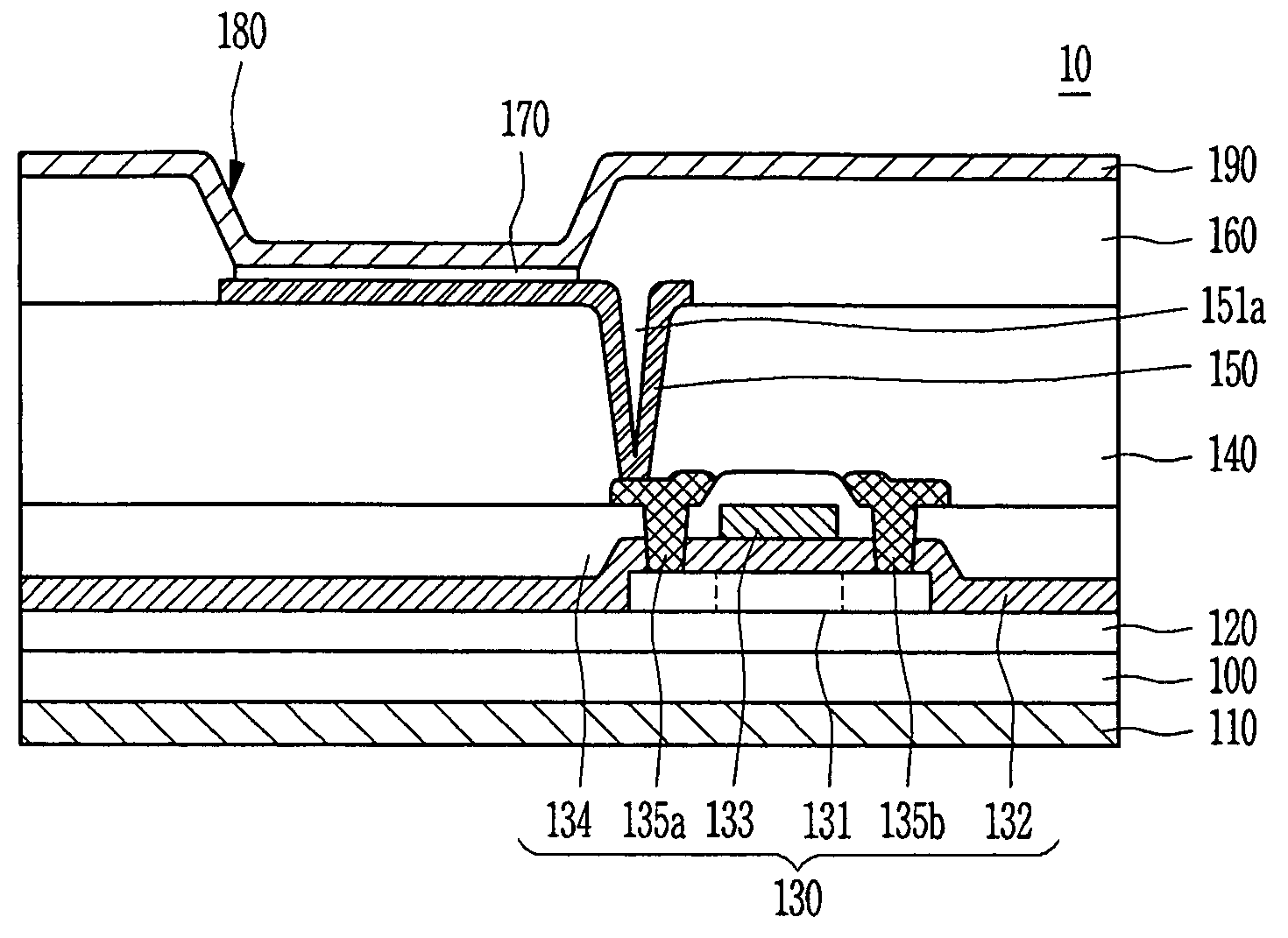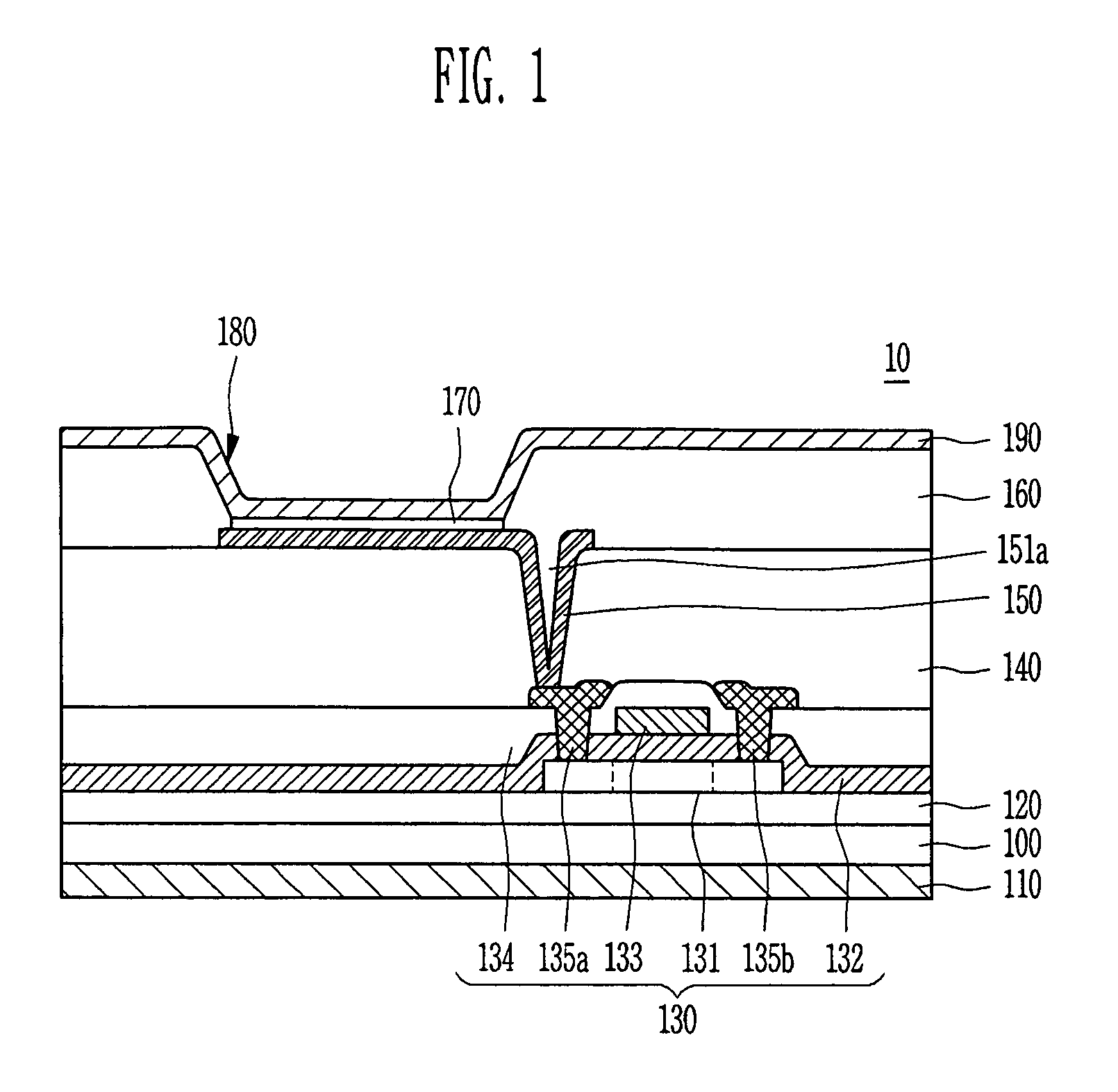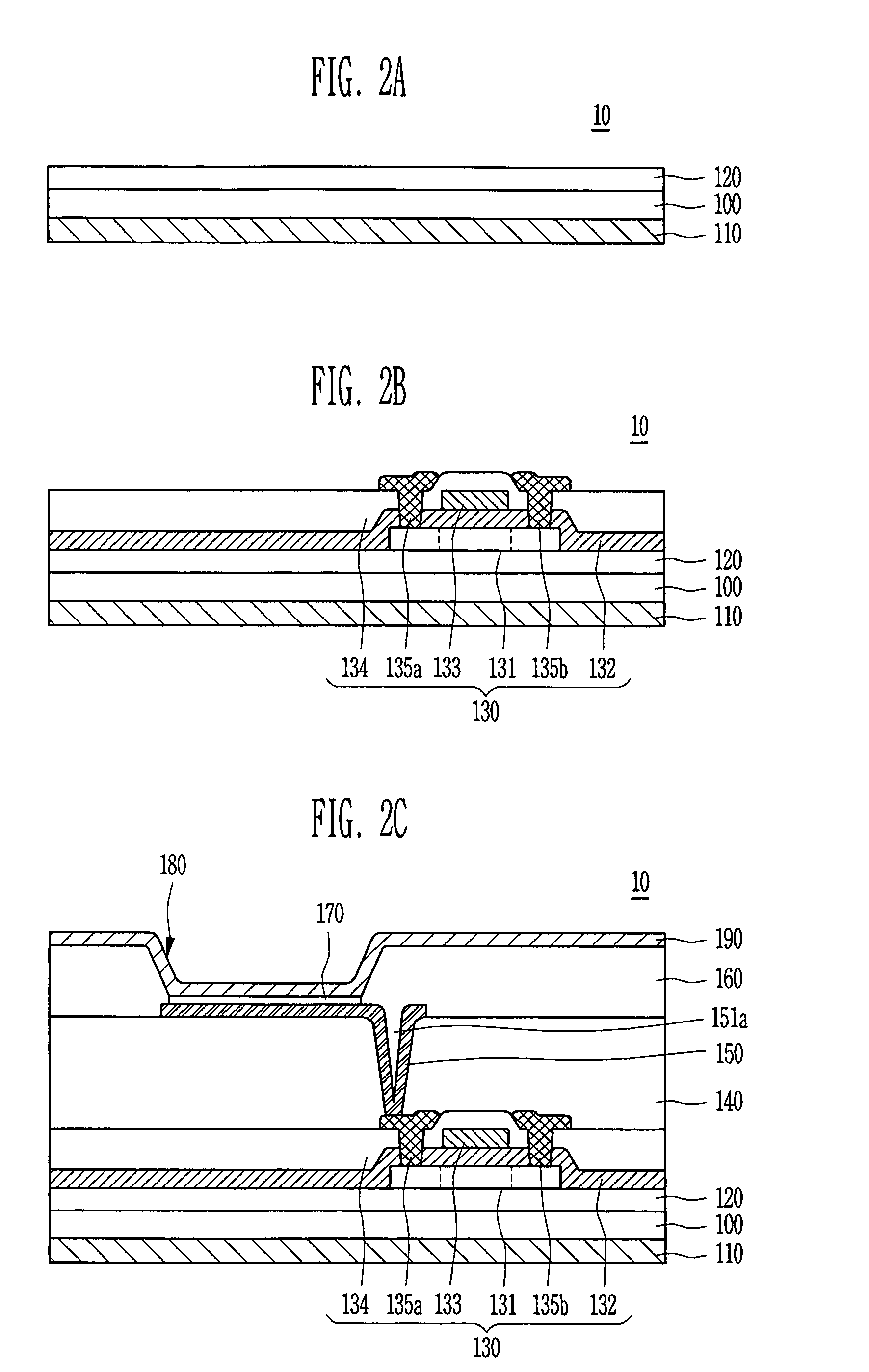Organic light emitting display (OLED) and its method of fabrication
a light-emitting display and organic technology, applied in the manufacture of electrode systems, electric discharge tubes/lamps, discharge tubes luminescnet screens, etc., can solve the problems of reducing the emission efficiency of oled and deteriorating the clarity of screens, and achieve high visibility and contrast
- Summary
- Abstract
- Description
- Claims
- Application Information
AI Technical Summary
Benefits of technology
Problems solved by technology
Method used
Image
Examples
first embodiment
[0023]FIG. 1 is a schematic sectional view of an Organic Light Emitting Display (OLED) according to the present invention.
[0024]Referring to FIG. 1, an OLED 10 includes a transparent substrate 100, a photochromatic layer 110 formed on a first surface of the transparent substrate 100, at least one transparent Thin Film Transistor (TFT) 130 formed on a second surface of the transparent substrate 100, and an organic light emitting device formed on and electrically connected to the transparent TFT 130.
[0025]The transparent substrate 100 can be formed of an insulating material, such as glass, plastic, silicon, or a synthetic resin, and is preferably a transparent substrate, such as a glass substrate.
[0026]The photochromatic layer 110 is formed on a first surface of the transparent substrate 100 of at least one of an inorganic, an organic, or a glass material that visibly changes by light. In particular, the photochromatic layer 110 is preferably formed of a borosilicate containing Ag or ...
second embodiment
[0058]FIG. 3 is a schematic sectional view of an organic light emitting display according to the present invention.
[0059]Referring to FIG. 3, an OLED 20 includes a transparent substrate 200, a photochromatic layer 210 formed on a first surface of the transparent substrate 200, at least one transparent Thin Film Transistor (TFT) 230 formed on a second surface of the transparent substrate 200, and an organic light emitting device formed on and electrically connected to the transparent TFT 230.
[0060]The transparent substrate 200 can be formed of an insulating material, such as glass, plastic, silicon, or a synthetic resin, and is preferably a transparent substrate, such as a transparent glass substrate.
[0061]The photochromatic layer 210 is formed on a first surface of the transparent substrate 200 of at least one of inorganic, organic, and glass materials that visibly change by light. In particular, the photochromatic layer 210 is preferably formed of a borosilicate containing Ag or ha...
PUM
 Login to View More
Login to View More Abstract
Description
Claims
Application Information
 Login to View More
Login to View More - R&D Engineer
- R&D Manager
- IP Professional
- Industry Leading Data Capabilities
- Powerful AI technology
- Patent DNA Extraction
Browse by: Latest US Patents, China's latest patents, Technical Efficacy Thesaurus, Application Domain, Technology Topic, Popular Technical Reports.
© 2024 PatSnap. All rights reserved.Legal|Privacy policy|Modern Slavery Act Transparency Statement|Sitemap|About US| Contact US: help@patsnap.com










